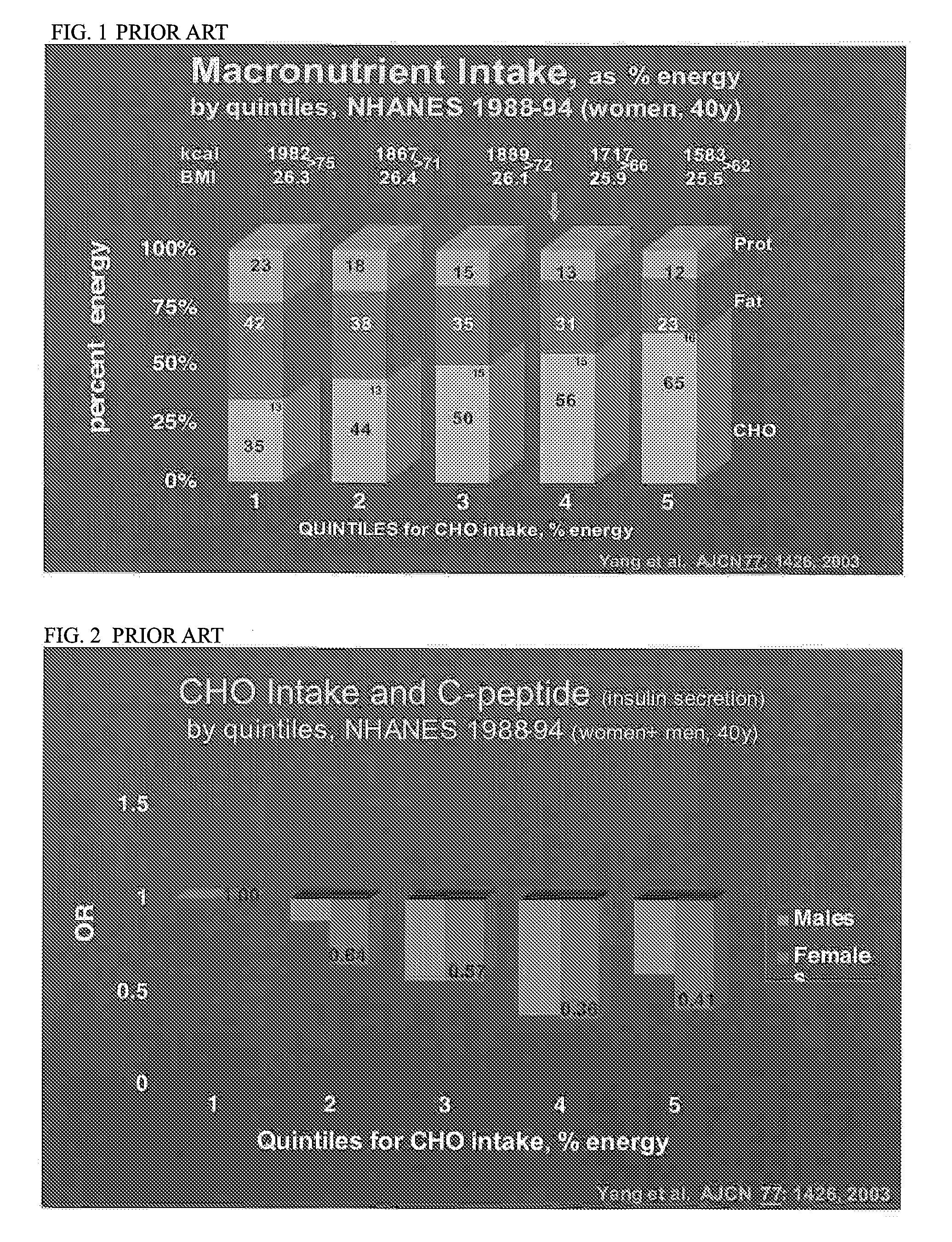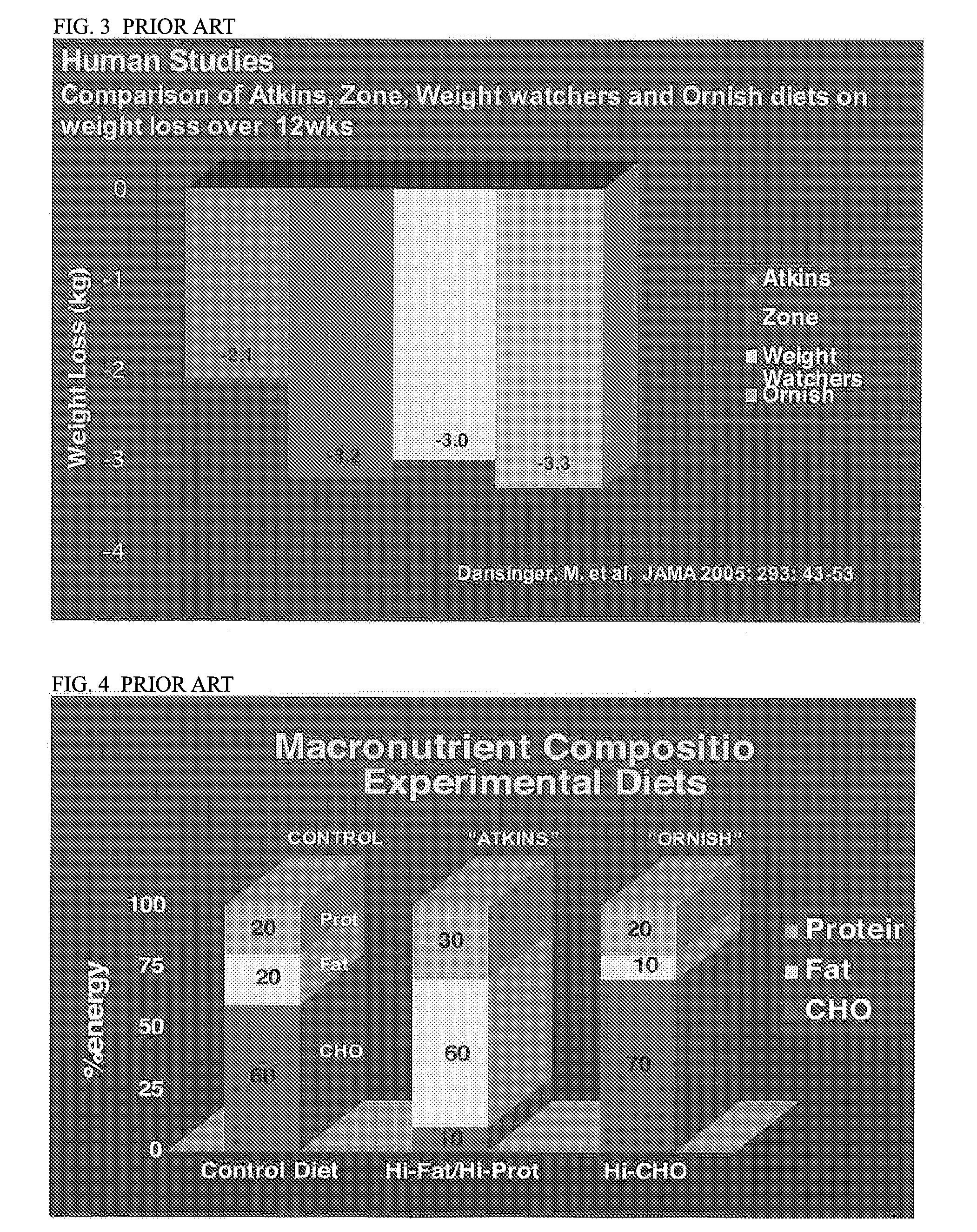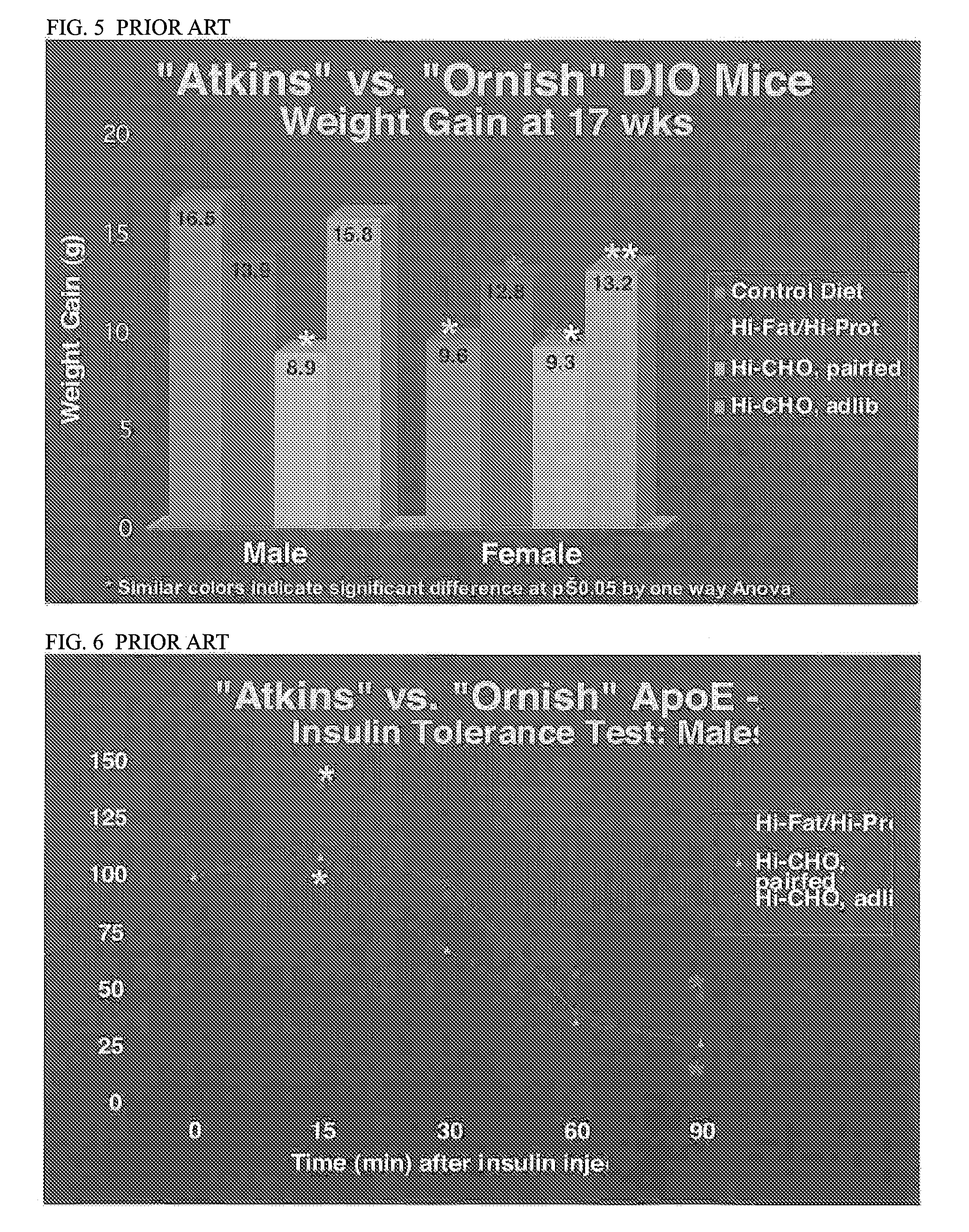Composition for nutritionally improving glucose control and insulin action
a technology of glucose control and composition, applied in the field of nutritional composition, can solve the problems of unclear effect of macronutrient composition of diet on adiposity and insulin resistance, inability to agree on the levels of carbohydrates, protein and fat, and impair insulin sensitivity, so as to improve insulin sensitivity, reduce insulin resistance, and increase postprandial fat clearance
- Summary
- Abstract
- Description
- Claims
- Application Information
AI Technical Summary
Benefits of technology
Problems solved by technology
Method used
Image
Examples
study 3
at Test of Diabetes Severity
[0083]Because trans fatty acids (FA) have a strong correlation between intake and diabetes risk for humans, we fed 3 levels of trans FA (0, 8, 16% en) to a collection of mice available in-house. Nine were genetically altered IR / IRS-1+ / −diabetic mice and nine were general wild types from our colony, for a total of 18 mice, six per diet. Trans FA intake did impair ITT relative to control diet (without trans), and impairment was directly associated with trans intake, but not to the degree seen in the LEPTr (− / −) mice. There was a tendency for trans to lower blood lipids, but trans also led to lower food intake.
[0084]Trans-fatty acids may increase 18:2 requirement and diabetes susceptibility while depressing appetite (insulin sensitivity was depressed despite lower food intake). Trans fat intake impaired insulin tolerance in mice fed 8 and 16% of energy as trans fat compared to mice on a control diet (0% trans fat). The decreased insulin sensitivity was direc...
study 4
erance Test
[0086]Here we asked whether the long term intake of a fat type, i.e., a saturated fat-rich control (2% en 18:2) or that fat supplemented with +2% en EPA+DPA as fish oil, in Brandeis casual WT mice, would generate different postprandial responses if the challenge fats (oral gavage) were varied. We challenged with heavy cream, olive oil, and corn oil to represent saturated, poly-unsaturated, and mono-unsaturated-rich fats.
[0087]The responses were, surprising, both in terms of the long-term fat underlying influence and the challenge fat character. Control mice did not respond as well to OFTT as the FO-supplemented mice (more evidence that n-3 PUFA improve fat-insulin metabolism), and OO was the worst challenge for controls while all fats were about the same in FO mice. Note that in these WT mice, long term FO seemed to enhance OFTT, in contrast to TYPE A mice in Study 1. Corn oil gave a peculiar “late double-bounce” in both long term diet groups. The point is that one must c...
study 10
Macronutrient Composition and Plasma Lipids and Insulin Sensitivity in C57BL / 6J Mice
[0098]This was a follow-up to study 6 and study 7. Mice with diet-induced obesity were randomized to one of 4 diets: 1) control diet (AHA; 60% CHO, 19% protein, 21% fat); 2) high fat / high protein diet (11% CHO, 31% protein, 58% fat); 3) high fat / normal protein (11% CHO, 19% protein, 70% fat); and 4) high carbohydrate diet pair fed and ad lib fed (70% CHO, 19% protein, 11% fat). Fasting plasma lipids, cholesterol, oral glucose tolerance test and insulin tolerance test were conducted after 12 weeks of diet intervention.
[0099]As a follow up to Study 6 and Study 7 in apoE (− / −) mice, this complimentary experiment represented a major undertaking in 50 male and female WT mice (C57BL / 6J) as the DIO model to determine whether the ATKINS diet would fair better than ORNISH, as it seemed to do in Study 6. In order to control differences in caloric and cholesterol intake between Atkins / Ornish groups (which was n...
PUM
| Property | Measurement | Unit |
|---|---|---|
| density | aaaaa | aaaaa |
| density | aaaaa | aaaaa |
| concentration | aaaaa | aaaaa |
Abstract
Description
Claims
Application Information
 Login to View More
Login to View More - R&D
- Intellectual Property
- Life Sciences
- Materials
- Tech Scout
- Unparalleled Data Quality
- Higher Quality Content
- 60% Fewer Hallucinations
Browse by: Latest US Patents, China's latest patents, Technical Efficacy Thesaurus, Application Domain, Technology Topic, Popular Technical Reports.
© 2025 PatSnap. All rights reserved.Legal|Privacy policy|Modern Slavery Act Transparency Statement|Sitemap|About US| Contact US: help@patsnap.com



